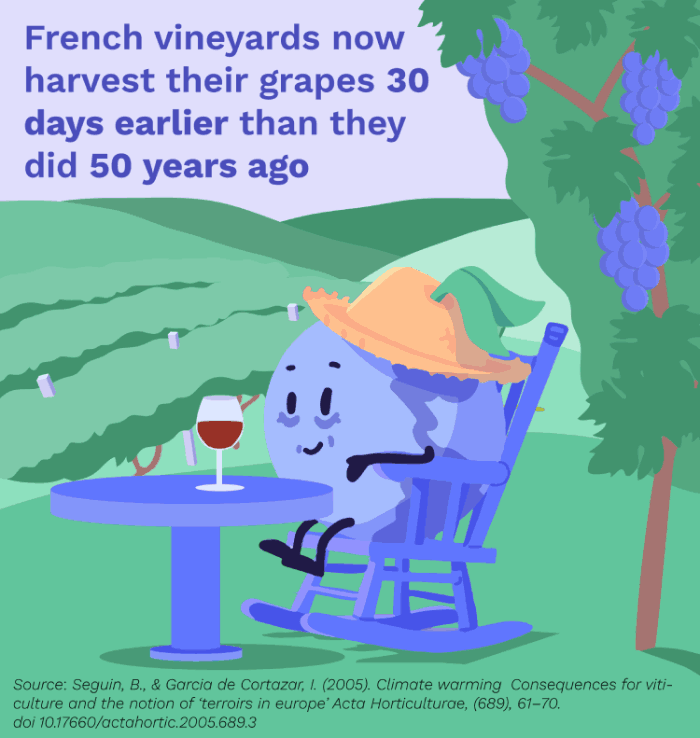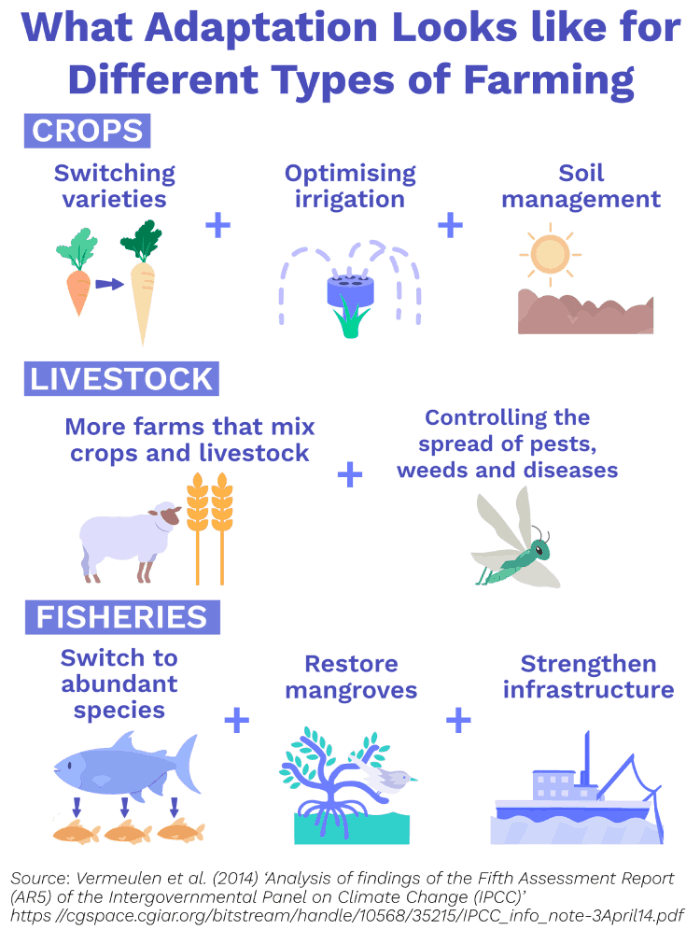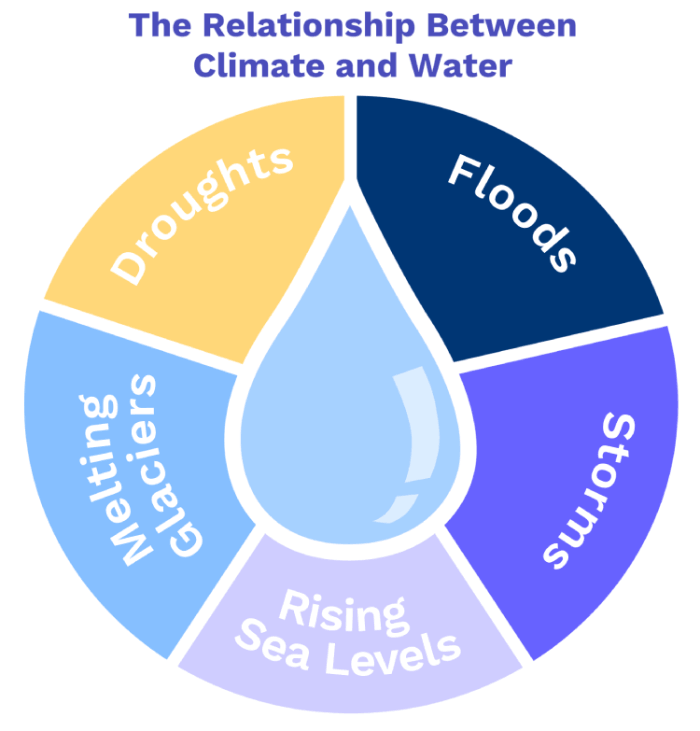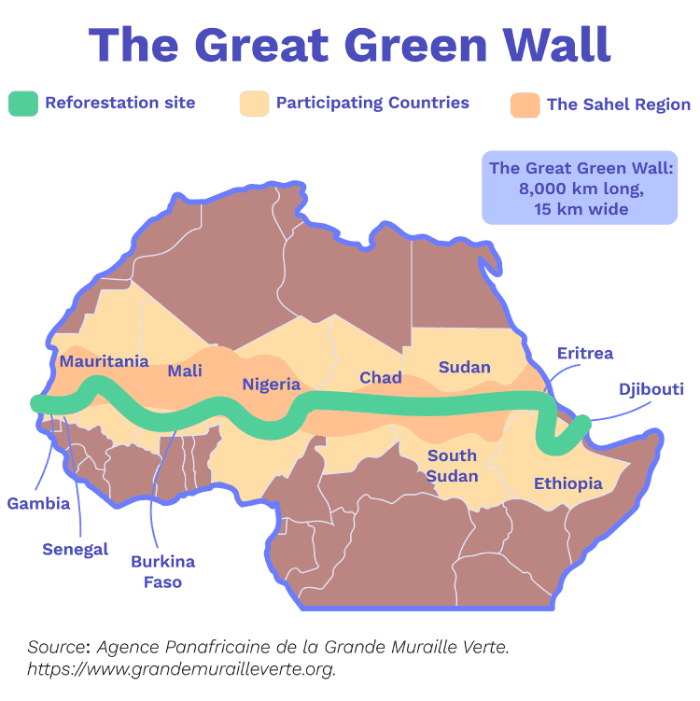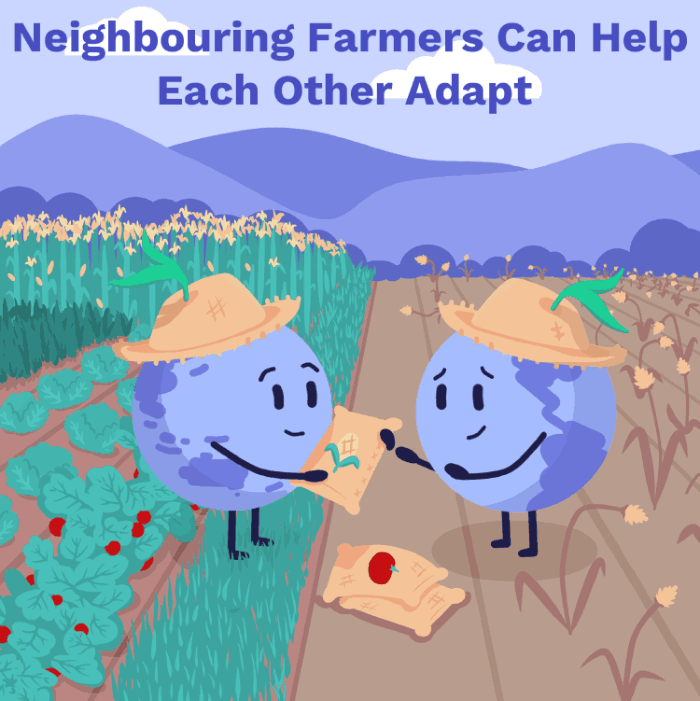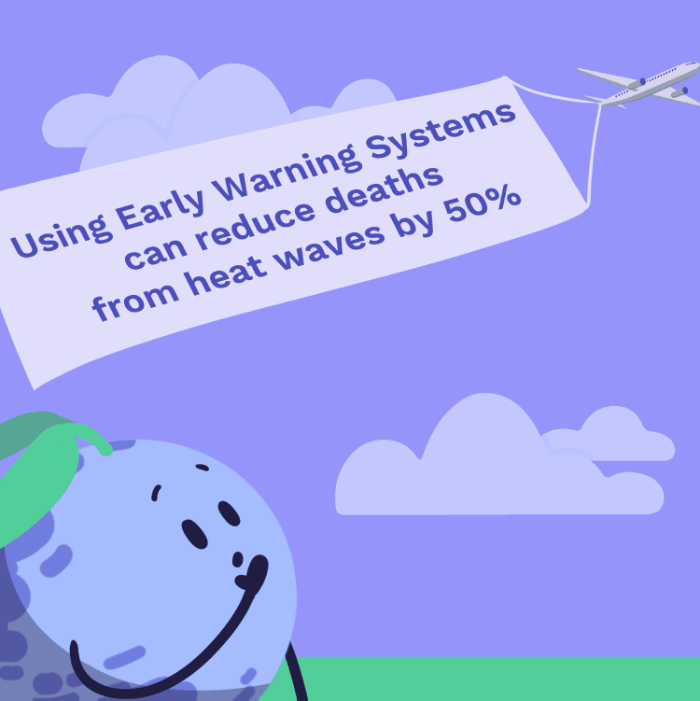2. Managing Water Supplies
When we think about the impacts of climate change - rising sea-levels, storms, floods, droughts, melting glaciers - you might start to recognise a watery (or more scientifically, ‘hydrological’) theme  .
.
These events will impact our access to safe drinking water as well as our ability to grow food 
 . Therefore, for both food production and health, we need to adapt to these changes by managing our water supplies more sustainably
. Therefore, for both food production and health, we need to adapt to these changes by managing our water supplies more sustainably  . This means rethinking where our water comes from, how we transport it, and how we use it in day to day life
. This means rethinking where our water comes from, how we transport it, and how we use it in day to day life 
 .
.
In a unique example from the Sahel, more than 20 countries have come together to create the ‘Great Green Wall’ - an 8,000km long farmer-led reforestation project 
 . The project aims to plant more vegetation and reduce the risk of prolonged drought
. The project aims to plant more vegetation and reduce the risk of prolonged drought  . As part of this, farmers have adapted by digging grids of planting pits which collect and store water through the dry season. Not only does this reduce the impact of water shortages, but it improves local crop yields and encourages the landscape to regenerate naturally
. As part of this, farmers have adapted by digging grids of planting pits which collect and store water through the dry season. Not only does this reduce the impact of water shortages, but it improves local crop yields and encourages the landscape to regenerate naturally  .
.
3 . Making use of research and technology
Research and technology will also be important tools for adapting to climate change. Indeed, there is a whole field of science dedicated to improving agricultural practices, reducing the environmental impact of farming, and making sure there is enough food for everyone. From there, individual farmers can help spread the word to their neighbours by sharing what adaptations work best in different regions  .
.
If we want to make these goals a reality, we need to fund this science 

 . Indeed, for every US dollar invested in research on agricultural adaptation, developing regions could gain $3.7 to $5.2 back in the long-run
. Indeed, for every US dollar invested in research on agricultural adaptation, developing regions could gain $3.7 to $5.2 back in the long-run  .
.
Genetically Engineered (GE) crops are a brilliant example of how agricultural research can help us adapt to climate change 



 .
.
GE technology has produced crops that can withstand higher temperatures, water scarcity and disease outbreaks 
 .
.
We can also use technology to help us predict the future. This is where Early Warning Systems (‘EWS’) come in handy. EWS uses historic data to predict future hazards like floods and heatwaves, allowing us to inform people of climate risks ahead of time  . As well as informing us on how to adapt weather-sensitive activities like farming
. As well as informing us on how to adapt weather-sensitive activities like farming  , EWS can have health benefits too. In the USA, for example, using an EWS to predict heatwaves resulted in 50% fewer deaths when comparing two similar events
, EWS can have health benefits too. In the USA, for example, using an EWS to predict heatwaves resulted in 50% fewer deaths when comparing two similar events  .
.
Moving Forward
We have learnt that we need people, technology, and research to help us adapt our food and water supplies to a changing climate. If not, we don’t just risk an unhealthy planet but we risk our own health too 
 .
.
Next Chapter. For example, higher atmospheric CO₂ has been linked to lower levels of protein, iron and zinc in the crops we grow
. In fact, our entire food production system is threatened by climate change
, from managing water supplies
to unpredictable weather and seasonal patterns
. Without adaptation, climate change could reduce global crop yields by as much as 5-30% by 2050
.

. This means there is a huge variety of ways farmers can adapt
.
